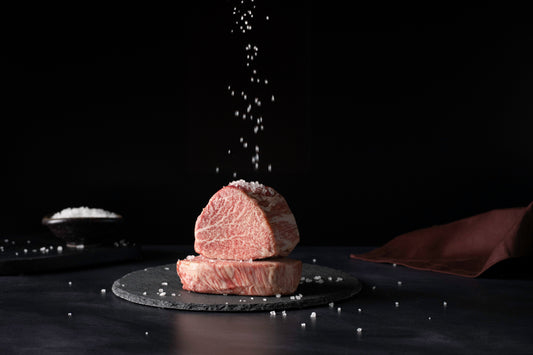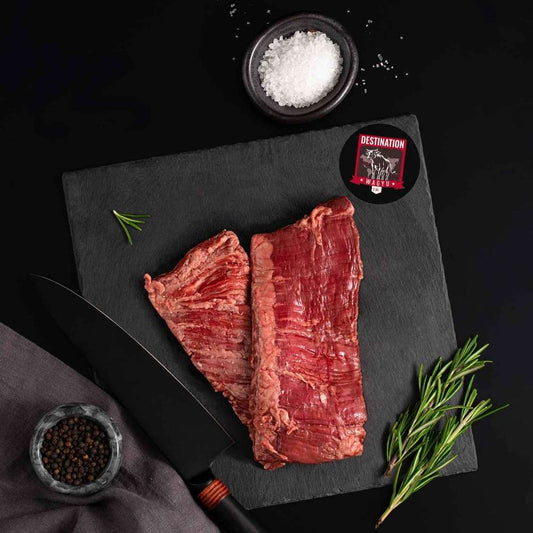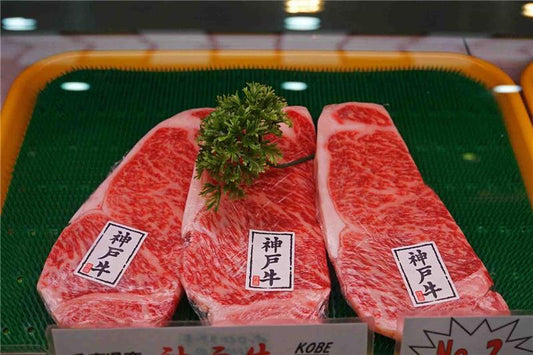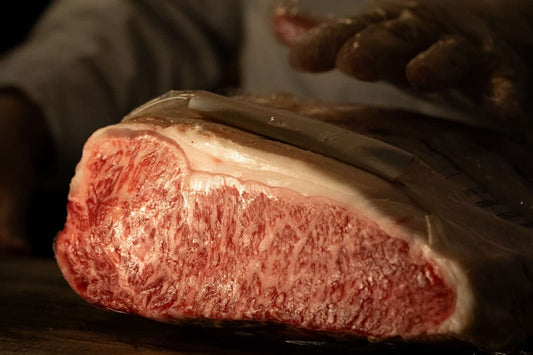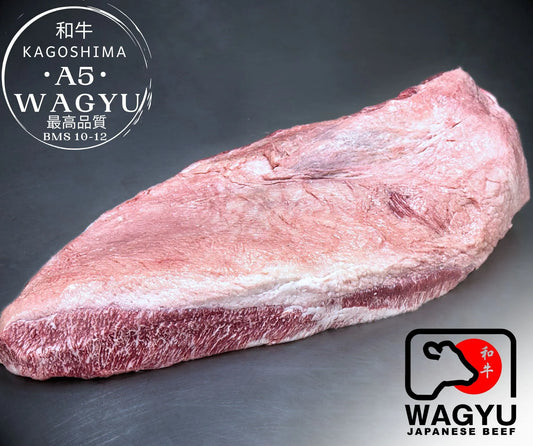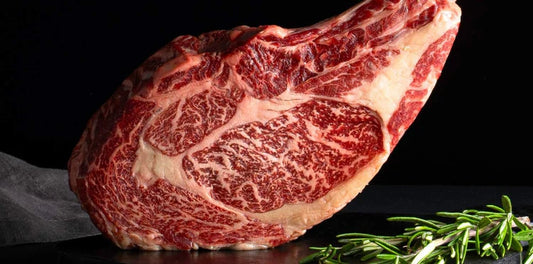Wagyu ribeye is not merely a steak—it is the embodiment of culinary excellence and gastronomic luxury. As a professional in the space, I have worked with countless cuts and grades of beef, yet none have captured my attention or palate quite like this one. It represents the perfect interplay of science, tradition, and artistry, crafted to deliver an unparalleled sensory experience. The intense marbling, buttery tenderness, and complex flavor of Wagyu ribeye have made it the gold standard in the world of premium steaks. This article explores every technical, historical, and gastronomic facet of Wagyu ribeye, offering insights that will resonate with chefs, restaurateurs, and seasoned professionals.
The ribeye, long celebrated for its rich fat content and tender texture, finds its ultimate expression in Wagyu beef. This cut, located between the sixth and twelfth ribs, captures the pinnacle of what Wagyu genetics and husbandry can achieve. My aim in this article is not just to explain why Wagyu ribeye is extraordinary, but to arm you with the knowledge to source, evaluate, prepare, and serve it to perfection. Let’s explore every layer of this unparalleled steak experience.
Understanding Wagyu: Genetics, Breeding, and Classification
Wagyu Breeds and Lineage
The hallmark of Wagyu ribeye lies in its genetics. Wagyu, translating to "Japanese cow," refers to a group of cattle breeds native to Japan that have been bred for centuries to produce exceptional beef. These breeds include Japanese Black (Kuroge Washu), Japanese Brown (Akage Washu), Japanese Polled (Mukaku Washu), and Japanese Shorthorn (Nihon Tankaku Washu). Among these, Japanese Black dominates the market and is renowned for its extraordinary marbling and flavor.
Wagyu's lineage is meticulously recorded, often going back several generations. Pedigree matters deeply in the Wagyu industry, and the precision with which these cattle are bred ensures the continuation of desirable traits like high intramuscular fat deposition. As professionals, we understand that the quality of the ribeye begins long before the cut reaches the plate—it starts with the genetic blueprint of the animal.
Full-Blood, Purebred, and Crossbred Wagyu
In the global market, distinctions between full-blood, purebred, and crossbred Wagyu are critical. Full-blood Wagyu cattle trace their lineage directly to Japan, with no genetic dilution, and represent the pinnacle of Wagyu quality. Purebred Wagyu contains a high percentage (usually over 93%) of Wagyu genetics but may include minimal crossbreeding. Crossbred Wagyu, such as Wagyu-Angus hybrids, offers a balance of marbling and robust flavor but lacks the ethereal texture of full-blood Wagyu.
Understanding these distinctions is essential when sourcing Wagyu ribeye. While full-blood Wagyu commands the highest prices, crossbred variants are more accessible and can still deliver an excellent dining experience when prepared properly.
Scientific Basis of Intramuscular Fat (IMF)
The defining feature of Wagyu ribeye is its dense, intricate marbling. This marbling, or intramuscular fat (IMF), is the result of genetic traits that encourage fat to integrate seamlessly within muscle fibers. Unlike the fat layers in conventional beef, IMF provides a creamy texture and enhances the steak's juiciness and flavor. Studies have shown that Wagyu beef contains higher levels of monounsaturated fats, particularly oleic acid, contributing to its buttery mouthfeel and perceived health benefits.
Anatomy of the Ribeye Cut
Physical Location
The ribeye is sourced from the primal rib section, situated between ribs six and twelve on the cow. This location is significant because the muscles in this area—primarily the Longissimus dorsi—are less active than those in the shoulder or leg. This reduced activity allows for the development of tender meat and an optimal distribution of fat. Within the ribeye, you’ll also find the spinalis dorsi (ribeye cap), a highly prized section known for its intense marbling and flavor.
Muscle Composition
The ribeye cut includes a complex interplay of muscles: the Longissimus dorsi, spinalis dorsi, and the multifidus dorsi. These muscles contribute to the cut’s signature texture, with the Longissimus dorsi providing the bulk of the meat and the spinalis dorsi adding a velvety, melt-in-your-mouth quality. The interplay of lean muscle and fat is key to the ribeye’s status as the ultimate steak cut.
Marbling Distribution
Wagyu ribeye’s marbling is unlike any other beef cut. Fine, web-like streaks of fat crisscross the muscle fibers, ensuring that every bite delivers a balance of flavor and texture. This marbling is most prominent in the ribeye cap and center eye, which are the most sought-after portions. The even distribution of fat also facilitates heat conduction during cooking, ensuring uniformity in temperature and flavor enhancement.
Comparison to Other Cuts
While other premium cuts like tenderloin and New York strip have their merits, the ribeye offers a unique combination of tenderness, flavor, and visual appeal. Tenderloin, for instance, is leaner and lacks the marbling that defines Wagyu ribeye, while the striploin offers bold flavor but can’t match the ribeye’s luxurious texture. This distinctiveness makes the ribeye the ideal showcase for Wagyu beef’s genetic advantages.
The Role of Marbling in Wagyu Ribeye
Definition and Importance of Marbling
Marbling, or the visible intramuscular fat within the ribeye, is the cornerstone of Wagyu’s appeal. It is both an aesthetic marker of quality and a functional element that influences the meat’s flavor, tenderness, and juiciness. In Wagyu ribeye, marbling is graded on the Beef Marbling Standard (BMS) scale, with A5 Wagyu typically achieving scores of 8 to 12—the highest possible range. This level of marbling is unrivaled in other beef breeds.
Chemical Composition of Wagyu Fat
The unique chemical composition of Wagyu fat sets it apart. Rich in monounsaturated fats, particularly oleic acid, Wagyu fat melts at lower temperatures than conventional beef fat. This characteristic not only creates its signature buttery texture but also allows the steak to cook evenly, with fat rendering into the meat to enhance flavor.
Marbling and Cooking Dynamics
One of the most fascinating aspects of Wagyu ribeye is how its marbling interacts with heat during cooking. The fine fat streaks conduct heat efficiently, leading to even cooking and the prevention of overcooked sections. However, the low melting point of Wagyu fat requires careful temperature control to avoid losing its delicate texture. This interplay of fat and heat is what makes preparing Wagyu ribeye both an art and a science.
Visual and Sensory Impact
From a visual standpoint, the intricate marbling of Wagyu ribeye is a feast for the eyes, with its creamy white fat weaving through vibrant red muscle. Sensory-wise, this marbling delivers an explosion of flavor and a velvety texture that coats the palate with each bite. The combination of visual and sensory elements elevates Wagyu ribeye to a near-magical dining experience.
Raising Wagyu: From Farm to Fork
Traditional Japanese Rearing Practices
The journey to creating the perfect Wagyu ribeye begins with meticulous and labor-intensive rearing practices rooted in centuries-old Japanese traditions. Wagyu cattle are raised with unparalleled care, ensuring minimal stress to enhance meat quality. Farmers provide a controlled environment with consistent temperature and humidity, often housing the cattle in individual stalls to reduce competition and promote even weight gain. Feeding regimens are highly specialized, incorporating rice straw, barley, and corn, sometimes augmented with beer or sake mash to stimulate appetite and digestion. These practices are designed not only to maximize marbling but also to ensure the fat maintains its characteristic creaminess.
Stress minimization is a cornerstone of Wagyu husbandry, as stress hormones can degrade meat quality. To this end, many Japanese farmers go to extraordinary lengths, including daily massages to improve muscle relaxation and fat distribution. While some of these practices have entered popular myth—such as cattle listening to classical music—there is truth in the emphasis on creating a calm, consistent environment. These traditional techniques have been refined over generations to produce the rich marbling and unique flavor profile that defines Wagyu ribeye.
Regional Variations in Rearing
Japan’s famed Wagyu regions, such as Kobe, Matsusaka, and Ohmi, each boast distinctive approaches to rearing that contribute to subtle differences in the beef they produce. Kobe Wagyu, perhaps the most internationally recognized, emphasizes a balance of marbling and flavor, adhering to strict certification standards to maintain its elite status. Matsusaka Wagyu, often regarded as the most tender, comes exclusively from virgin female cattle, a factor that some believe contributes to its delicate texture. Ohmi Wagyu, raised in the Shiga Prefecture, benefits from the mineral-rich waters of Lake Biwa, imparting a unique sweetness to the fat.
These regional distinctions illustrate the profound impact of terroir and rearing practices on the final product. Professionals sourcing Wagyu ribeye must consider not only the grade but also the provenance, as the subtle differences in fat sweetness, texture, and aroma can influence the dining experience.
International Production Methods
As demand for Wagyu beef has skyrocketed, international producers in countries like Australia and the United States have sought to replicate Japanese practices while adapting them to local conditions. Australian Wagyu is often a hybrid of Japanese Wagyu and local breeds, such as Angus, and focuses on large-scale production to meet global demand. Grain feeding is standard, with many operations implementing extended feeding periods of 300 to 400 days to develop marbling.
In the U.S., Wagyu-Angus crossbreeds, often called "American Wagyu," are the most common, blending the marbling of Wagyu with the beefy flavor of Angus. While these international variations cannot fully replicate the intricacies of Japanese full-blood Wagyu, they provide high-quality alternatives that are more accessible and versatile in professional kitchens.
The Lifecycle of Wagyu Cattle
The lifecycle of Wagyu cattle is a slow and deliberate process. Calves are raised for approximately 28 months, far longer than conventional beef cattle, allowing for gradual fat accumulation and muscle development. During the fattening phase, farmers monitor the cattle’s diet and weight meticulously, adjusting feed ratios to optimize marbling without sacrificing muscle quality. This extended rearing process contributes significantly to the premium price of Wagyu ribeye, but it is essential to achieving its unparalleled texture and flavor.
Wagyu Grading Systems
Japanese Meat Grading Association (JMGA)
The Japanese Meat Grading Association (JMGA) employs one of the most rigorous and comprehensive grading systems in the world, ensuring that only the finest Wagyu ribeye earns the coveted A5 rating. This system evaluates two main criteria: yield grade and meat quality grade. Yield grade, denoted by letters A, B, and C, measures the percentage of usable meat from a carcass. Grade A represents the highest yield, essential for ribeye cuts with consistent thickness and marbling.
Meat quality is scored on a scale from 1 to 5, based on four factors: marbling, color and brightness, firmness and texture, and fat quality. Within this framework, the Beef Marbling Standard (BMS) scale assigns marbling scores from 1 (minimal marbling) to 12 (extreme marbling). A5 Wagyu represents the pinnacle of quality, with a BMS score of 8 to 12, combining abundant marbling, superior color, and unparalleled fat texture.
Comparison of International Grading Standards
While Japan’s grading system sets the gold standard, other countries have developed their own systems to evaluate Wagyu. In the United States, the USDA grading system—primarily designed for conventional beef—relies on levels like Prime, Choice, and Select, with Prime being the closest equivalent to Wagyu. However, USDA grading does not differentiate between marbling types or textures, making it less precise for evaluating Wagyu ribeye.
Australia employs the AUS-MEAT and Meat Standards Australia (MSA) systems, which are more nuanced in their approach to marbling. The Australian marbling scale ranges from 1 to 9+, with Wagyu often exceeding the upper limit. These international systems provide useful benchmarks but fall short of the detail and precision of the JMGA’s evaluation.
Factors in Grading
Professionals sourcing Wagyu ribeye should consider several grading factors beyond marbling. Color and brightness are essential indicators of freshness and quality, with the meat’s vibrant red hue signifying optimal conditions. Firmness and texture provide clues about the handling and rearing practices, as poorly treated cattle yield less cohesive meat. Fat quality, evaluated for both texture and color, determines how well the ribeye’s marbling will melt during cooking, influencing flavor and mouthfeel.
Sourcing Wagyu Ribeye
Identifying Authentic Wagyu
Sourcing authentic Wagyu ribeye requires vigilance and expertise, as the global demand for Wagyu has led to widespread mislabeling and counterfeit products. True Japanese Wagyu comes with documentation certifying its lineage, region of origin, and grading. These certificates, often issued by the JMGA or local prefectural authorities, are crucial for verifying the authenticity of A5-grade ribeye.
When sourcing Wagyu internationally, professionals must scrutinize labeling. Terms like "Kobe-style" or "Wagyu beef" do not guarantee authenticity, especially if the product lacks clear pedigree or grading information. Familiarity with regional identifiers, such as Tajima-gyu for Kobe Wagyu, can help professionals differentiate genuine Wagyu from imposters.
Evaluating Ribeye Quality
Even among genuine Wagyu ribeye, quality can vary significantly. Look for consistent marbling throughout the cut, as uneven fat distribution can indicate lower grades or improper butchering. The thickness of the ribeye also matters—cuts that are too thin risk overcooking, while overly thick steaks may not heat evenly. The ribeye cap should display pronounced marbling, as this section offers the most luxurious texture and flavor.
Supply Chain Challenges
Navigating the supply chain for Wagyu ribeye can be challenging due to import restrictions and fluctuating market dynamics. Japanese Wagyu is subject to quotas and high tariffs in many countries, limiting its availability and driving up prices. Professionals should establish relationships with reputable suppliers who specialize in premium beef and can provide consistent quality and authenticity. Transparency in sourcing is paramount, particularly when catering to discerning clients who expect the highest standards.
The Science of Cooking Wagyu Ribeye
Unique Cooking Properties of Wagyu
Wagyu ribeye’s defining feature—its rich marbling—presents unique cooking challenges and opportunities. The low melting point of Wagyu fat, around 77°F (25°C), means that it begins to render even at room temperature. This characteristic requires careful temperature control during preparation to avoid losing the delicate fat that contributes to the steak’s signature flavor. Unlike conventional beef, Wagyu ribeye thrives at lower cooking temperatures to preserve its structure and prevent over-rendering.
The Science of Cooking Wagyu Ribeye
Unique Cooking Properties of Wagyu
Cooking Wagyu ribeye requires a deep understanding of its unique physical properties, which set it apart from conventional beef. The fat in Wagyu ribeye melts at a significantly lower temperature due to its high concentration of monounsaturated fats, particularly oleic acid. This means that the steak’s marbling can begin rendering even at room temperature. While this characteristic creates a luxurious mouthfeel, it also poses a challenge: improper heat application can cause the fat to melt away prematurely, robbing the steak of its signature richness. The key lies in treating Wagyu ribeye with precision, ensuring that its natural qualities are preserved.
This low melting point also means that Wagyu ribeye can be cooked to lower internal temperatures than other steaks while still achieving optimal flavor and tenderness. Professionals often recommend medium-rare as the ideal doneness level, but for Wagyu, even slightly below medium-rare can produce a succulent, buttery texture. Understanding these nuances is critical for chefs looking to highlight the steak’s unparalleled qualities.
Preparation Methods
The choice of preparation method for Wagyu ribeye depends on the desired presentation and the culinary context, but certain techniques are particularly well-suited to this luxurious cut. Grilling is a popular choice, as it imparts a smoky, charred flavor that complements the steak’s inherent richness. However, the intense heat of a grill requires careful attention to prevent overcooking or excessive fat loss. Pan-searing is another excellent method, offering precise temperature control and the ability to develop a rich crust through the Maillard reaction.
For professionals aiming for maximum consistency, sous vide cooking has become a favored approach. By cooking Wagyu ribeye at a precise, low temperature in a vacuum-sealed bag, chefs can ensure even doneness throughout the steak. The final sear, often performed in a scorching-hot cast-iron skillet, adds the necessary caramelization to enhance flavor and visual appeal. Reverse searing, where the steak is first cooked gently in the oven or sous vide and then seared, is also a popular choice for preserving the integrity of Wagyu’s delicate fat.
Seasoning Philosophy
Wagyu ribeye’s extraordinary flavor requires little enhancement, and over-seasoning can detract from its natural qualities. For this reason, many chefs advocate for a minimalist approach, using only high-quality salt to draw out the steak’s inherent sweetness. Some purists even recommend salting the steak after cooking to preserve the meat’s moisture and avoid unnecessary fat loss. When additional seasoning is desired, freshly cracked black pepper or subtle aromatics like garlic and thyme can complement the beef without overpowering it.
Cooking Challenges
Cooking Wagyu ribeye is as much an art as it is a science, and even experienced chefs can face challenges. One of the primary difficulties lies in achieving the perfect sear without overcooking the interior. Due to its high fat content, Wagyu ribeye cooks faster than conventional beef, making temperature monitoring essential. Investing in an accurate meat thermometer and understanding heat distribution in cooking equipment are crucial for success.
Another challenge is managing the steak’s fat rendering. While the marbling in Wagyu ribeye creates its signature texture, it also produces a significant amount of rendered fat during cooking. Excess fat can lead to flare-ups on the grill or an overly greasy finish if not handled properly. Techniques such as frequent flipping and cooking over indirect heat can help mitigate these issues, ensuring the steak remains perfectly balanced.
Pairing Wagyu Ribeye
Beverage Pairings
Pairing beverages with Wagyu ribeye is an art in itself, as the steak’s intense richness demands a complementary counterpart. Full-bodied red wines with high tannin levels, such as Bordeaux, Barolo, or Napa Valley Cabernet Sauvignon, are classic choices. The tannins in these wines cut through the steak’s fat, balancing its richness and enhancing its flavors. For a more unconventional pairing, lighter reds like Pinot Noir or even sparkling wines can provide a refreshing contrast.
Sake is another excellent option, particularly varieties like Junmai Daiginjo, which offer a clean, slightly fruity profile that complements the steak’s umami notes. Whiskey enthusiasts may opt for rich, peaty Scotch or a Japanese single malt, both of which bring complexity and depth to the dining experience. When pairing beverages with Wagyu ribeye, the goal is always to balance its buttery richness without overshadowing its delicate flavor.
Side Dish Concepts
The best side dishes for Wagyu ribeye are those that provide balance and contrast, allowing the steak’s qualities to shine. Light, acidic options such as citrus-dressed salads, pickled vegetables, or shaved fennel with lemon offer a refreshing counterpoint to the steak’s richness. Earthy vegetables like roasted mushrooms, asparagus, or charred Brussels sprouts also pair beautifully, adding depth without overpowering the meat.
Carbohydrate-based sides should be approached with care. While classic mashed potatoes or buttery rice can enhance the steak’s luxurious feel, overly heavy preparations may compete with its flavor. Simple preparations like roasted fingerling potatoes or herbed polenta are excellent choices, providing a subtle backdrop to the main event.
Sauces and Condiments
While Wagyu ribeye shines on its own, carefully chosen sauces and condiments can enhance the dining experience. Traditional Japanese accompaniments like ponzu, yuzu kosho, or freshly grated wasabi add brightness and umami, complementing the steak without overwhelming it. For a more Western approach, béarnaise or a red wine reduction can provide a rich yet balanced counterpoint. When using sauces, it’s crucial to maintain restraint—less is more when working with a steak of this caliber.
Economics and Sustainability
Price Drivers for Wagyu Ribeye
The premium price of Wagyu ribeye reflects its intensive production process, limited supply, and extraordinary quality. Rearing Wagyu cattle requires significantly more time and resources than conventional beef, with specialized diets, longer lifespans, and meticulous care contributing to higher costs. Additionally, the exclusivity of certain regional designations, such as Kobe or Matsusaka, further elevates prices. These factors make Wagyu ribeye a true luxury product, often reserved for high-end dining establishments or discerning private clients.
Sustainability Concerns
The growing popularity of Wagyu ribeye has raised important questions about its sustainability. Intensive rearing practices, including extended feeding periods and controlled environments, can have a significant environmental impact. High feed consumption and resource use contribute to a larger carbon footprint compared to conventional beef. As professionals, we must consider these factors when sourcing and serving Wagyu, balancing luxury with responsibility.
Emerging Solutions
In response to sustainability challenges, producers are exploring innovative approaches to reduce the environmental impact of Wagyu production. Regenerative farming techniques, which focus on soil health and carbon sequestration, are gaining traction among forward-thinking farmers. Additionally, alternative feed sources, such as by-products from other industries, are being tested to lower resource consumption. While these solutions are still in development, they represent an important step toward making Wagyu ribeye more sustainable.
Historical and Cultural Perspectives
The Origins of Wagyu
Wagyu’s origins trace back over 2,000 years, deeply embedded in Japan’s agricultural and culinary history. Initially, Wagyu cattle were prized for their strength and endurance in agricultural work, rather than for their meat. The introduction of Buddhism in Japan led to prohibitions against meat consumption for centuries, which meant these cattle were rarely slaughtered. However, this period also allowed the development of unique cattle genetics, as regional isolation and selective breeding cultivated traits that later defined Wagyu beef. By the Meiji Restoration in the late 19th century, when Western influences began to permeate Japan, beef consumption gained acceptance, and Wagyu started its transformation into a culinary treasure.
The transition from work animal to luxury food was gradual but deliberate. With the opening of Japan’s ports, foreign cattle breeds were introduced, but the Japanese maintained strict breeding practices to preserve the integrity of native breeds. Over time, these methods evolved into the precision breeding programs that continue to this day. Wagyu beef became a symbol of refinement and luxury in Japan, enjoyed during celebrations and formal gatherings.
Cultural Significance of Wagyu
Wagyu beef, including ribeye, is far more than a food product in Japan—it is a cultural icon. The preparation and presentation of Wagyu are often tied to rituals that emphasize respect for the ingredients and the people who consume them. In Japanese culture, meals featuring Wagyu are seen as an opportunity to foster connection and gratitude. This reverence extends to the farmers, who are considered artisans of their craft, dedicating their lives to raising cattle that produce world-class beef.
The concept of "omotenashi," or Japanese hospitality, often finds its highest expression in meals featuring Wagyu. Chefs meticulously prepare and present the meat, ensuring that each bite is a harmonious blend of texture, flavor, and visual beauty. This cultural emphasis on perfection and mindfulness elevates Wagyu ribeye from a mere meal to a multi-sensory experience.
Global Adoption
The global rise of Wagyu beef, and specifically Wagyu ribeye, began in earnest during the late 20th century as Japanese beef gained recognition for its exceptional quality. Kobe beef, in particular, became a byword for luxury in Western markets, opening doors for other Wagyu varieties. As culinary professionals and food enthusiasts discovered Wagyu’s unique characteristics, demand surged, leading to international efforts to produce Wagyu cattle outside Japan. However, the original Japanese breeds remained unmatched in quality, cementing their position at the pinnacle of the beef market.
Today, Wagyu ribeye is featured on menus in the most exclusive restaurants worldwide, symbolizing luxury and culinary sophistication. Its presence often denotes an establishment’s commitment to offering only the finest ingredients, and chefs continuously innovate new ways to showcase its extraordinary qualities. Despite its global success, Wagyu retains its roots in Japanese tradition, offering a fascinating blend of cultural heritage and modern gastronomy.
Emerging Innovations in Wagyu Production
Genetic Research and Breeding Advances
Recent advancements in genetics are reshaping the Wagyu industry, allowing for even greater precision in breeding. Genetic testing now enables farmers to identify cattle with superior marbling potential, optimizing breeding pairings to achieve consistent quality. In Japan, some farms employ genome analysis to select traits such as oleic acid concentration, which enhances the flavor and tenderness of the meat. Outside Japan, these techniques are being adopted by international producers to improve crossbreeding programs, bridging the gap between full-blood Wagyu and local breeds.
Genetic improvements are not limited to marbling alone. Research is also focused on traits such as disease resistance and feed efficiency, both of which contribute to sustainable farming practices. By fine-tuning these genetic traits, producers can maintain the exceptional quality of Wagyu ribeye while addressing growing concerns about environmental and economic sustainability.
Feed Technology
Innovative feed technologies are transforming the way Wagyu cattle are raised. While traditional feed regimens rely on grains, rice straw, and occasional supplements, modern techniques incorporate advanced nutrition science. For example, some producers are experimenting with feeds enriched with omega-3 fatty acids, which may further enhance the meat’s health benefits and flavor profile. Others are exploring fermented feed options to improve cattle digestion and nutrient absorption, potentially reducing waste and environmental impact.
Feed innovation also includes localized approaches tailored to specific climates and resources. In regions with limited access to traditional Japanese feed components, alternative feeds such as brewer’s grains or agricultural by-products are being used without compromising quality. These innovations allow for greater scalability of Wagyu production while preserving its hallmark traits.
Lab-Grown Wagyu
One of the most groundbreaking developments in the Wagyu industry is the emergence of lab-grown meat. Companies are now developing cultured Wagyu beef by replicating muscle and fat cells in controlled environments. While still in its infancy, lab-grown Wagyu offers the potential to produce meat with the same marbling and flavor characteristics as traditional Wagyu, without the environmental and ethical concerns associated with cattle farming.
Though lab-grown Wagyu is not yet widely available, its implications are profound. It could democratize access to high-quality beef while significantly reducing the carbon footprint of meat production. For chefs and culinary professionals, lab-grown Wagyu represents an exciting frontier that could redefine the possibilities of working with this luxurious ingredient.
Automation in Wagyu Farming
Automation and artificial intelligence are beginning to play a role in Wagyu farming, streamlining processes that were once entirely manual. AI-driven monitoring systems can now track cattle health, weight gain, and feed consumption with remarkable accuracy. These systems help farmers identify potential issues early, ensuring that each animal reaches its full potential. Automated feeding systems, meanwhile, provide precise portions tailored to each animal’s needs, reducing waste and improving efficiency.
While these technologies are more common in international Wagyu production, Japanese farmers are gradually adopting them to enhance traditional practices. Automation does not replace the artisanal care that defines Wagyu farming but rather augments it, allowing farmers to maintain their meticulous standards while scaling their operations.
Final Thoughts
Wagyu ribeye stands as the ultimate steak experience, representing the intersection of tradition, science, and artistry. Its unparalleled marbling, buttery texture, and complex flavor make it a cornerstone of fine dining and a testament to the dedication of the farmers, chefs, and professionals who bring it to life. From its genetic foundation to its meticulous rearing and precise preparation, every step of the process contributes to its status as the gold standard of beef.
For professionals in the culinary and beef industries, Wagyu ribeye is more than an ingredient—it is an opportunity to showcase mastery, elevate menus, and delight discerning clients. As the world continues to evolve, with new innovations and sustainability challenges reshaping the industry, Wagyu ribeye remains a timeless symbol of excellence. Whether sourced from Japan’s traditional regions or innovative international producers, it will always represent the pinnacle of steak artistry.
As we look to the future, the commitment to preserving Wagyu’s legacy while embracing new possibilities ensures that this extraordinary steak will continue to captivate palates and inspire culinary innovation for generations to come.
About Destination Wagyu
At Destination Wagyu, we share your passion for the extraordinary—especially when it comes to the pinnacle of steak excellence: Wagyu ribeye. As a premium e-commerce brand, we are proud to deliver authentic Wagyu beef directly to discerning customers across the United States. Our partnerships with world-renowned suppliers, including Miyazaki, Kobe Wine, Kagoshima, and Stone Axe, allow us to offer unparalleled quality that honors the traditions and standards of Wagyu production.
Every ribeye we offer is more than a steak—it’s an experience. Sourced with precision and curated with care, our selection reflects the rich marbling, buttery tenderness, and complex flavors that define the Wagyu legacy. Whether you’re a chef crafting exceptional dishes, a steak enthusiast exploring the heights of flavor, or a gift-giver aiming to impress, Destination Wagyu ensures that every cut embodies luxury and excellence.
If this article has inspired you to elevate your culinary journey, we invite you to explore our collection. From our carefully curated gift boxes to tailored subscription services, Destination Wagyu provides not just premium beef but also concierge-level service designed to exceed your expectations. Experience the finest in Wagyu ribeye and more—because, at Destination Wagyu, “You Have Great Taste.”
Visit our online shop today to discover our offerings and make your next meal unforgettable.




